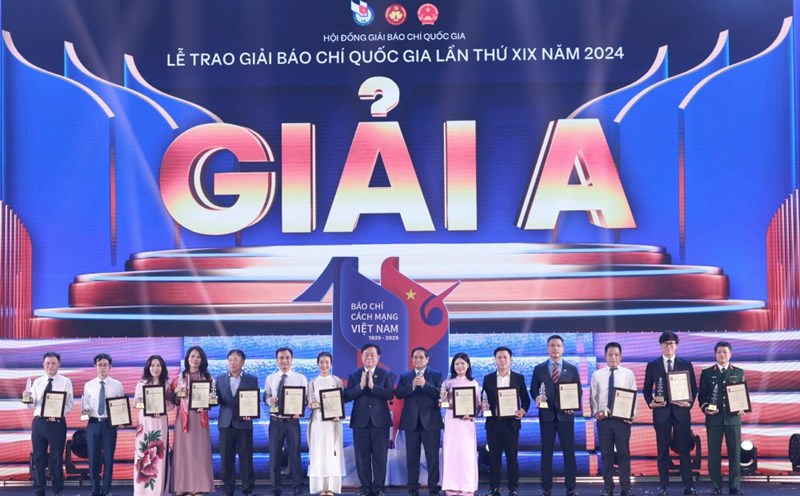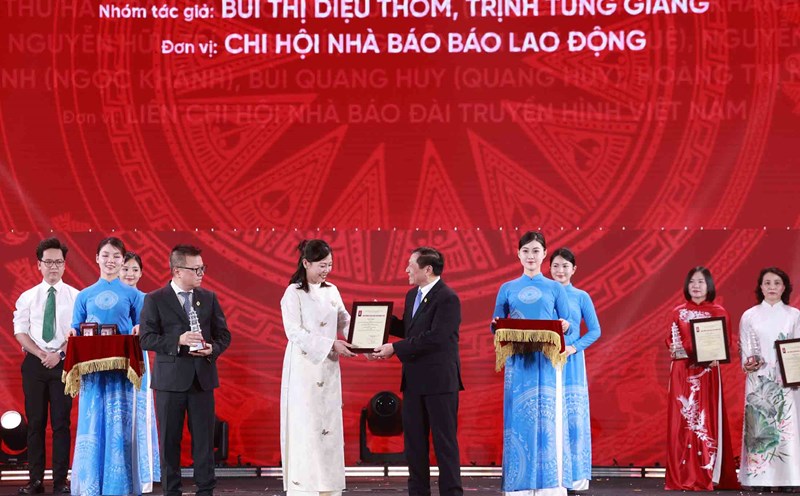Rare press warehouse
The door to the document room located in the heart of Rach Gia City has just been opened, I was overwhelmed by the press space that Mr. Nha had stored more carefully since 60 years ago. Among them, there is a newspaper that is over 70 years old. This is the Giai Phong newspaper - the agency of the Liberation Front of the Southwest; and this is the Giai Phong Army - the newspaper of the armed forces of the people to liberate the Southwest...
Mr. Nha seemed to get lost in the world of the Vietnamese Revolutionary Press in the Southwest region during the resistance war against France and the US. Although many books have been stained by time, he kept them straightforward and solemn. In addition to provincial newspapers such as: "Chien Thang" - the agency fighting for the people of Rach Gia province, and then the An Bien District News published in June 1954, in Mr. Nha's collection, there are many local newspapers, such as: "Vong Len" newspaper - the agency of the Can Tho Uprising Committee; Ca Mau Giai Phong newspaper, and Song Hau Arts Magazine, Huong Tram Arts. Most of these are special publications, the Spring issue is elaborately presented and color printed.
For many people in the Mekong Delta newspaper village, this is a rare collection because for a long time they have only heard "listen" but have not seen "ish". More specifically, Mr. Nha's collection also includes a source of press documents that are "unique". These are redists handwritten by the journalists themselves on many types of paper with many different shapes. According to estimates, the total document set is up to thousands of pages of writing and journaling. But for Mr. Nha, this is only a small part. Because the more important and important part is currently located somewhere underground in Lot 12 of U Minh Thuong area. In 1972, the war entered a fierce period, fearing loss, he divided the collected newspapers into cow's skin (also known as rollers, the terracotta tools used to store domestic water) and ammunition boxes and carefully buried them. After the country's reunification, he returned to look for it, only the bullet box was given to him. "We have to find that threshold, the documents will be rich and useful" - Mr. Nha regretted.
Living Library and Living Book
For Mr. Nha, the collection is a treasure because he built it since the early days of the revolution. In 1961, following the wish of his father working in the resistance zone of Rach Gia province, he participated in the revolution and was assigned to be in charge of the printing work, then slowly copy the minutes before entering the press profession. It was the time of "taining" each word, directly witnessing the hardships and dangers under the "rain of bombs and bullets" that helped the 14-year-old boy (born in 1947) feel the profession of literature and start collecting journalism. But it would not be complete to call Mr. Nha's collection a press library. Because he not only has to accumulate and preserve for himself, but also to spread and share.
Many journalists of that day were forever on the battlefield. Therefore, newspapers really need to be spread to provide a source of documents on revolutionary journalism in the Southwest region, and connect with today's writer with the previous generation". With that in mind, he is ready for everyone to refer to, and proactively donates to relevant units and individuals. Not only taking advantage of meetings of Editor-in-Chief and Chairmen of Journalists Association of provinces in the region to present newspapers and Journalists Association of provinces such as Tra Vinh, Vinh Long, Soc Trang, Ca Mau, he also directly visited the homes of many colleagues to present. Through those trips, he recorded his family background and communication methods to connect immediately when needed. Therefore, during his lifetime, journalist Tran Thu Dong - former member of the Propaganda Department of Long Chau Ha province, former Editor-in-Chief of An Giang Newspaper, Mr. Nha's comrade in the resistance war - once wrote: "Living as a "time book". Asking anyone, whether that person is a leader or an office worker, matchmaker, or protector of the Propaganda Department during the resistance war, Nha responded immediately and often more than expected.
Resurrection of journalists
The conversation was interrupted many times when his phone rang continuously. "The first time the Anh Chieu Awards are about to be approved, relatives of former teammates will call to ask for support for the application" - Mr. Nha shared.
It is said to support, but in fact he directly does it because most of them do not know much about the compositions that their father and uncle composed more than half a century ago. And he has promoted his arsenal to "revive" his deceased colleagues. The case of journalist, painter, and martyr Hong Van Quang ( Bay Ve), former reporter of Chien Thang Newspaper (the predecessor of Kien Giang Newspaper today), former Deputy Head of the Department of Arts, Rach Gia Provincial Propaganda Department is a typical example.
On November 25, 1969, on his way to work, he was shot and killed by enemy aircraft in Thuong Luong canal, Van Khanh commune, An Minh district. At that time, his children were too young and his wife took a step further, and the brutal war caused the family to almost no longer collect his compositions. When he learned that the First Chieu Anh Awards had the content: "rewarding and rewarding authors and groups of authors with works and works of ideological and artistic value", Mr. Nha searched the document warehouse and brought Mr. Ve's works to be published in Xuan Chien Thang newspapers in 1966, 1967 and 1969, then wrote the introduction and explanation in accordance with the organizing committee's style.
Also from this treasure trove, he "revived" dozens of veteran journalists for many reasons sucked under the dust of time. After extracting documents and copying works, he personally prepared a dossier to propose the award of the Commemorative Medal for the Cause of Vietnamese Journalism, such as journalist - martyr Ho Chau - Tran Trong Nghia (1925-19684) and most notably the case of journalist Le Kim Trac (Le Trac - Tu Lung - Ba Diep). Through the scene of the senior pen, former Secretary of the Red Devils Newspaper, with many achievements during the war, including being awarded the Second Prize of the Nguyen Dinh Chieu contest in 1964, but due to difficult family circumstances and no longer being able to preserve the work, Mr. Nha carefully collected and prepared a file for Mr. Trac to receive the Commemorative Medal. He is currently sprinting to print collections for Mr. Trac on the occasion of the 100th anniversary of the Vietnam Revolutionary Press.
"With diligence in preserving and then quietly transferring and spreading, Mr. Nha not only turned the pages of newspapers dyed with time into heroic memories for dozens, hundreds of collectives and individuals, but also contributed to proving the important role of the press in the struggle to liberate the South and unify the country". I would like to borrow the words of journalist Hoang Van - former Head of the Kien Giang Provincial Branch, Mr. Nha's colleague during the war to end this article as a gratitude to journalist Truong Thanh Nha, a rich and humane person!











